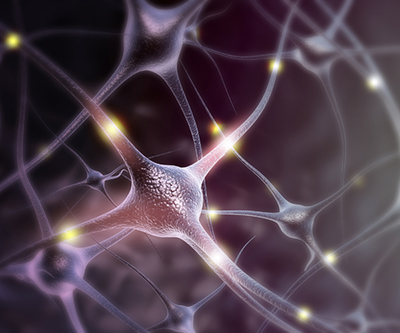
Artistic representation of neurons.
Credit: Stock image
Niemann-Pick disease type C1 (NPC1), a rare genetic disorder affecting children and adolescents, is characterized by an impaired ability to move cholesterol through cells. This leads to difficulty controlling movements, liver and lung disease, impaired swallowing, intellectual decline, and death. The movement difficulties in NPC1 result from gradual loss of brain cells known as Purkinje neurons.
The Porter Research Group and their NIH colleagues identified riluzole, a drug approved to treat amyotrophic lateral sclerosis (ALS), as a potential treatment to slow neuron loss in NPC1.
The scientists found that mice with a form of NPC1 have a diminished ability to lower levels of glutamate—a brain chemical that stimulates neurons—after it has bound to a neuron’s surface. Glutamate buildup can be toxic to cells and may contribute to the neuron loss seen in NPC1. Riluzole blocks the release of glutamate and hence delays the progression of ALS in people.
Compared to untreated mice with NPC1, those treated with riluzole survived 12% longer. The findings suggest that riluzole or similar drugs may provide a way to slow disease progression in people with NPC1.
Learn more about the Developmental Endocrinology, Metabolism, Genetics and Endocrine Oncology Group: https://www.nichd.nih.gov/about/org/dir/affinity-groups/DEMG-EO
 BACK TO TOP
BACK TO TOP